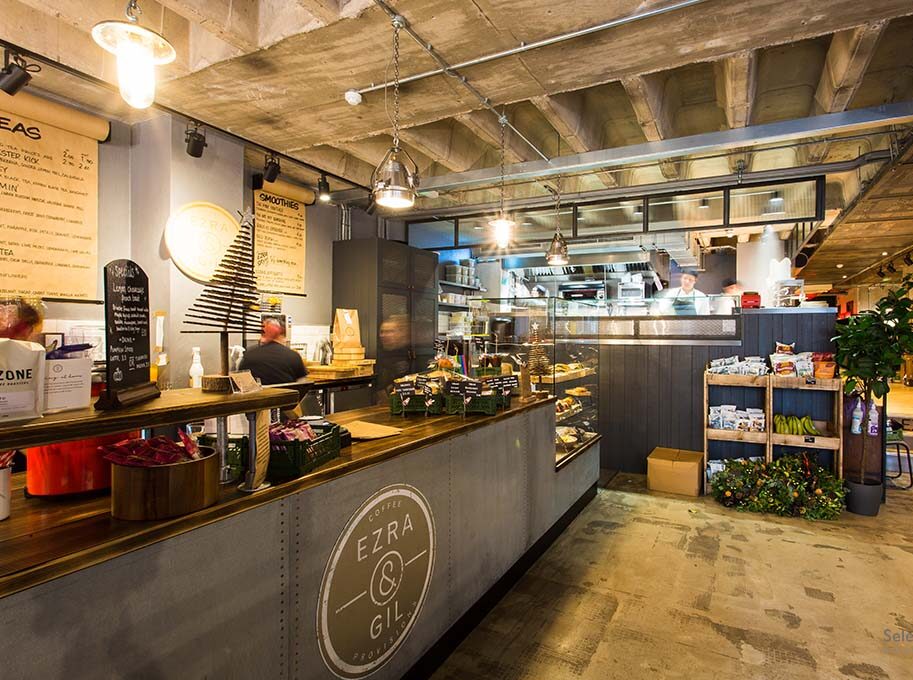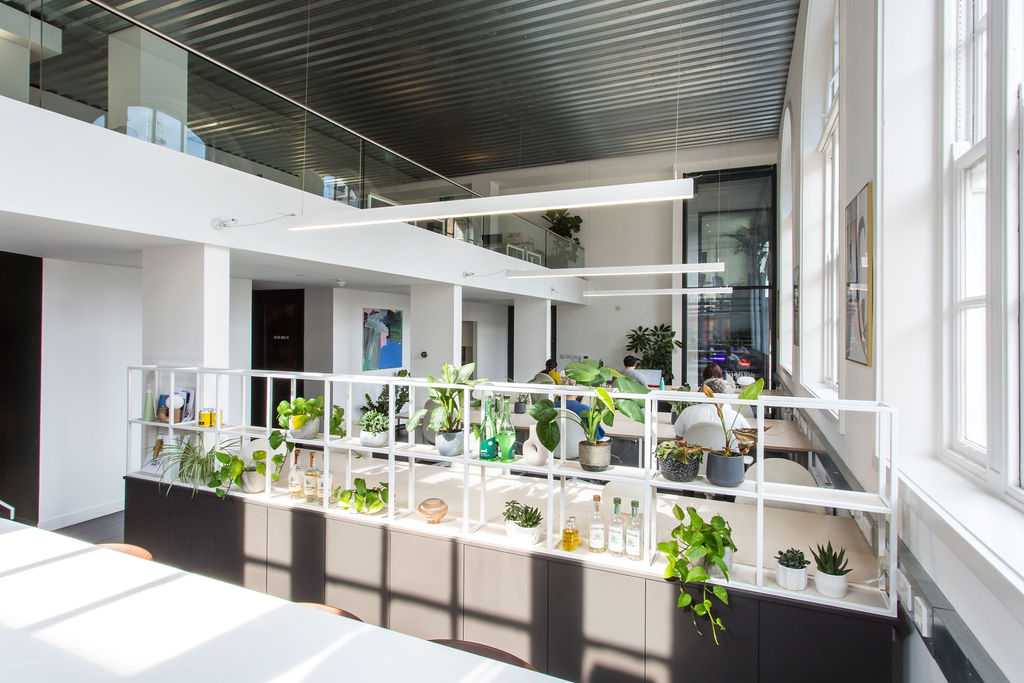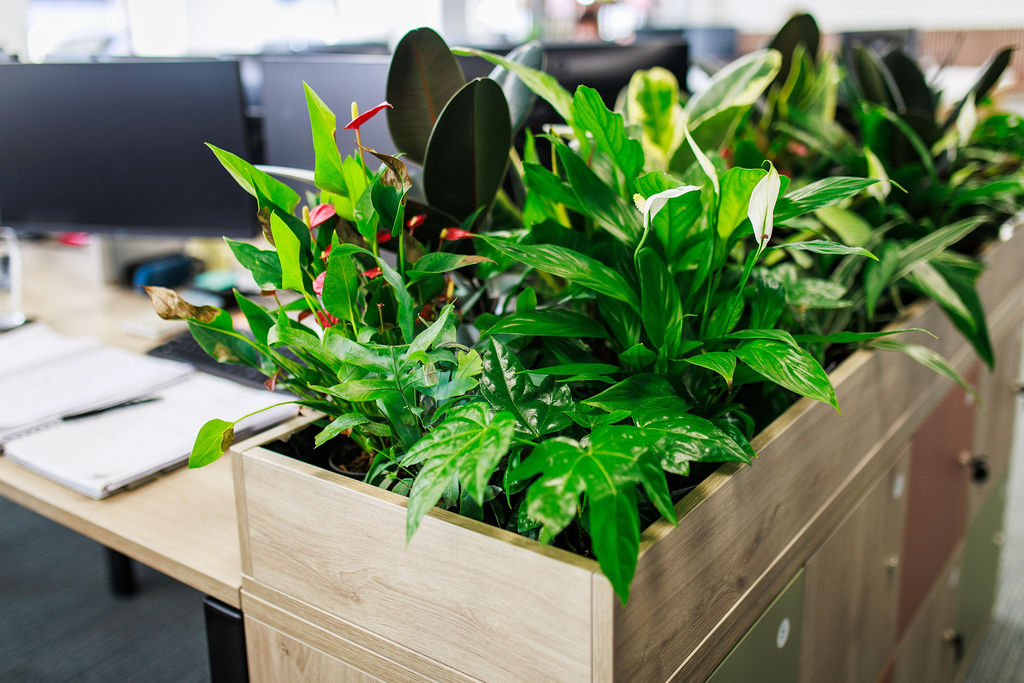When considering an office design, it’s easy to focus on the visual aspects, such as layout, lighting, and furniture. However, the most effective office designs engage all the senses to create a well-rounded environment that improves productivity, creativity, and overall wellbeing. One often overlooked aspect is scent. Smell is a powerful sense that can influence emotions, mood, and even cognitive function.
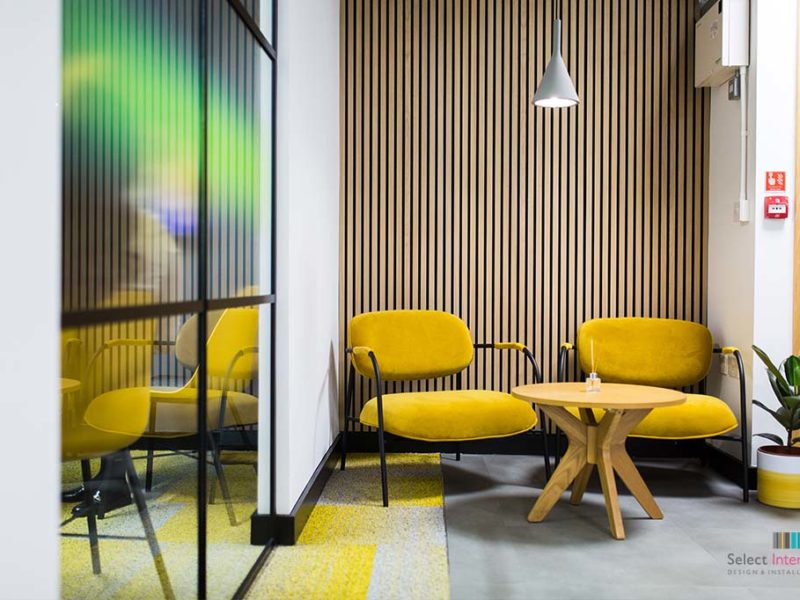
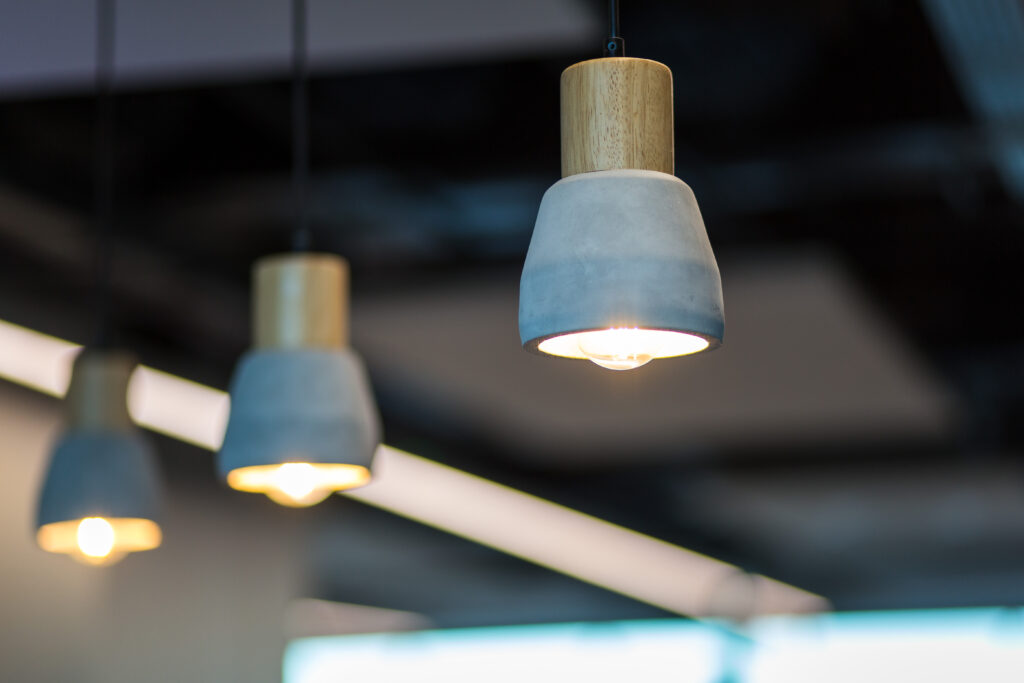
Why designing for all senses is essential
Engaging the senses in office design goes beyond aesthetics and functionality. Stimulating the senses – sight, sound, touch, taste, and smell – can create an environment where employees feel more comfortable, focused, and motivated. Each sense contributes to how we perceive our surroundings, and when these sensory inputs are well-balanced, they can significantly impact how we work.
Research has shown that multi-sensory environments can enhance cognitive performance and increase creativity. For instance, ambient sounds and comfortable textures can help reduce stress, while scent can boost focus or calm the mind. By addressing all five senses, office designers can create a workspace that looks good and feels good to work in.
The impact of scent in office design
Scent is one of the most powerful yet often neglected office design aspects. Our sense of smell is directly linked to the part of the brain that processes emotions and memories, which means certain scents can evoke specific feelings or mental states. When used correctly, scent can make an office environment more inviting, improve employee focus, reduce stress, and even enhance creativity.
For example, studies have shown that certain scents like peppermint and rosemary can help boost concentration and alertness, making them ideal for areas where focus is needed. On the other hand, calming scents like lavender or sandalwood can help reduce stress and anxiety, making them perfect for breakout areas or relaxation zones.
Introducing scent into an office benefits employees and creates a lasting impression on visitors. A pleasant scent in the reception area can make a positive first impression, welcoming guests and giving them a sense of the company’s culture and values.
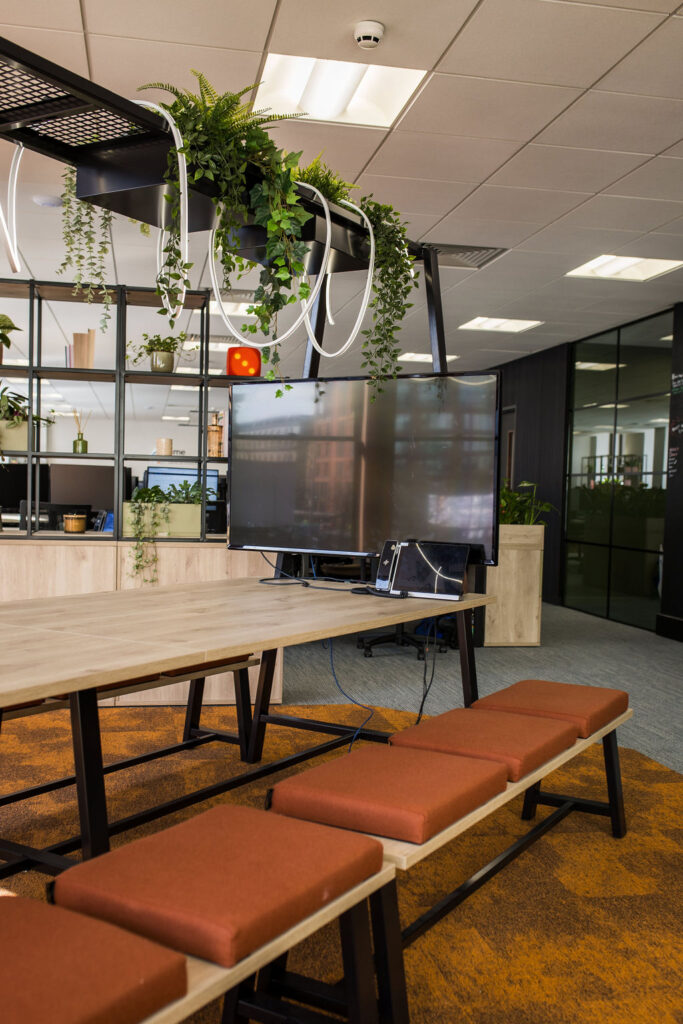
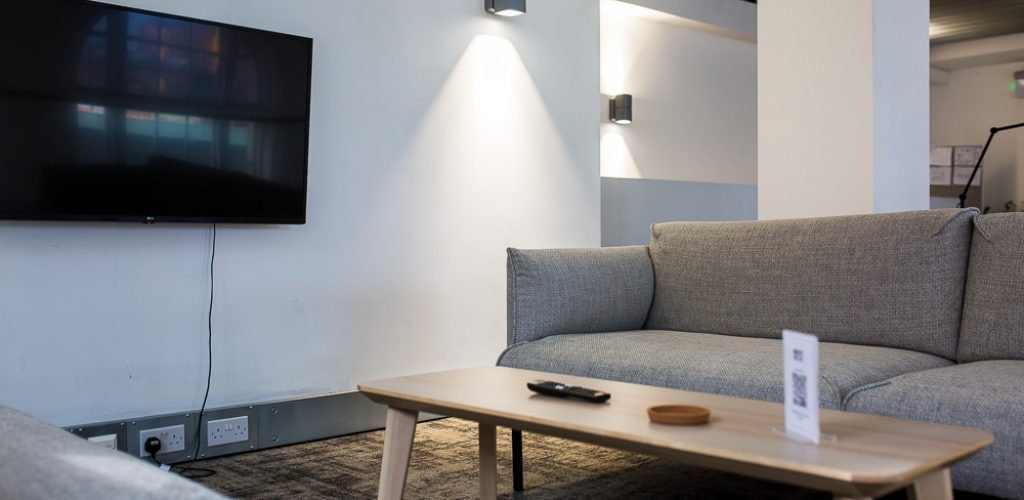
Choosing the right scents for different office environments
Different scents can be used to enhance various areas of the office, depending on the intended purpose of each space. Below are some recommendations for selecting suitable fragrances for key areas of the workplace:
- Calming scents: Scents like lavender, chamomile, and sandalwood are known for their calming properties. These are ideal for breakout areas, relaxation rooms, or wellness zones where employees can unwind and recharge.
- Energising scents: To stimulate energy and focus, opt for scents such as citrus (lemon, orange, or grapefruit), peppermint, and rosemary. These scents are invigorating and can be used in workspaces requiring focus and alertness, such as open-plan desks or meeting rooms.
- Neutral scents: For communal spaces like kitchens, cafeterias, or hallways, lighter and neutral scents such as vanilla or fresh linen can keep the atmosphere pleasant without being overwhelming. These scents help maintain a welcoming environment without competing with the other sensory inputs in busy areas.

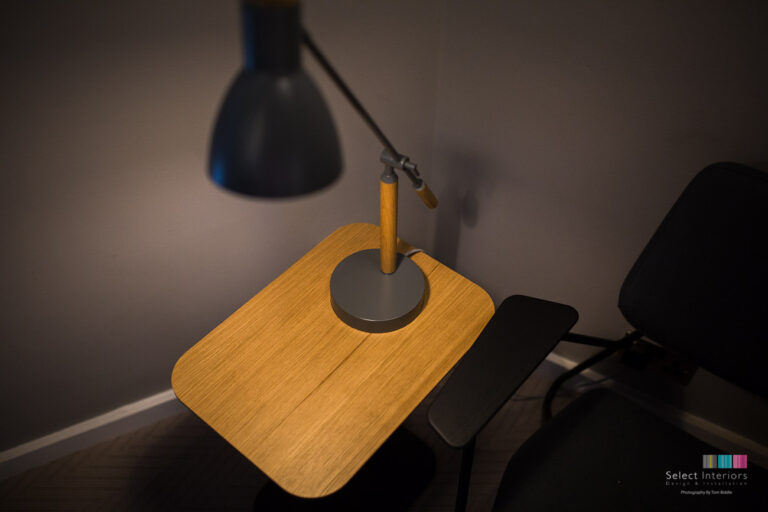
Scent zoning: tailoring scents to a specific office design
One of the most effective ways to incorporate scent into office design is through “scent zoning.” This means using different scents in various areas of the office to enhance the specific purpose of each space. By tailoring fragrances to specific zones, you can create a more dynamic and functional environment that meets the needs of employees throughout their workday.
- Reception and entrance areas: First impressions matter, and the reception area is often the first point of contact for visitors, clients, and potential employees. A welcoming scent, such as a subtle blend of citrus or vanilla, can make the space feel inviting and professional. Fresh, clean scents also create a sense of openness and hospitality.
- Breakout areas: In spaces dedicated to relaxation or informal meetings, calming scents like lavender, chamomile, or sandalwood can help create a peaceful atmosphere. These scents can encourage employees to unwind and recharge, making them more effective when they return to their desks.
- Workstations and meeting rooms: Energising scents such as peppermint, rosemary, or lemon can be very effective in areas where focus and creativity are important. These scents help boost concentration, mental clarity, and alertness, making them ideal for areas where employees need to focus on tasks or engage in brainstorming sessions.
- Bathrooms and kitchens: These areas should be kept fresh and clean. Scents like eucalyptus, tea tree, or mint work well in bathrooms and kitchens as they naturally deodorise. These scents create a fresh, hygienic atmosphere without being too overpowering.
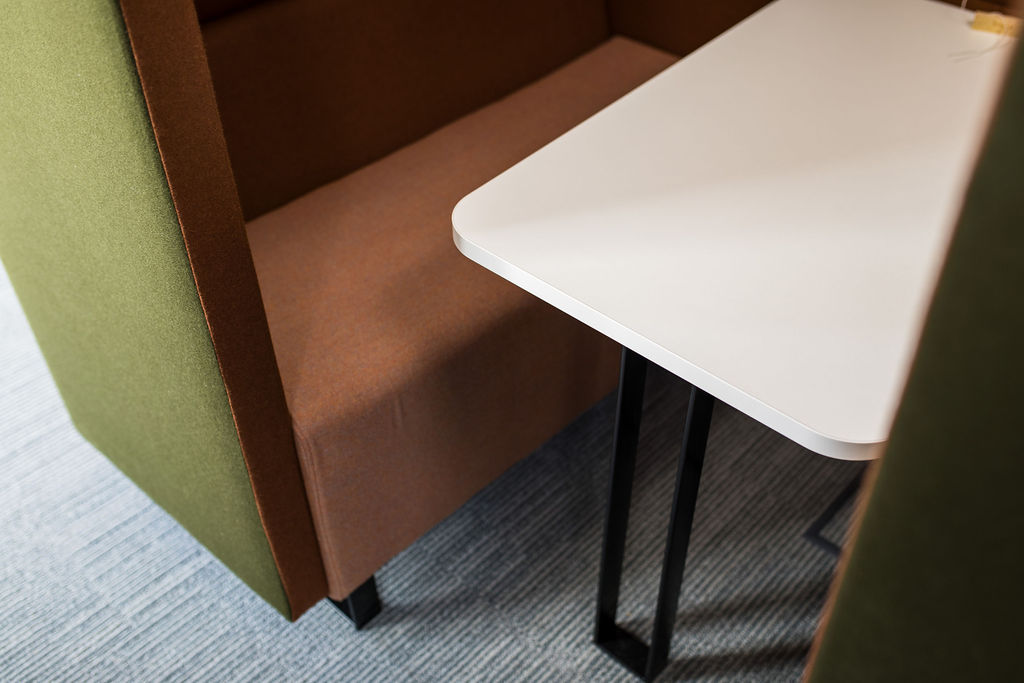
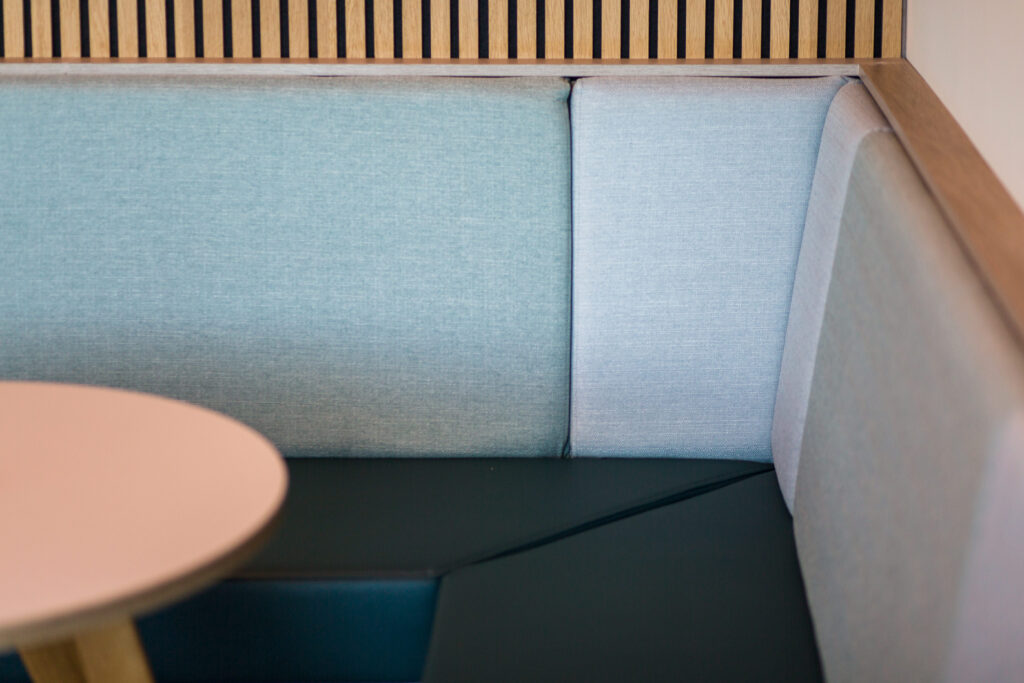
Methods of scent delivery in office spaces
There are several ways to introduce scent into an office environment, but choosing the right method will depend on the size of the office, the type of scent being used, and how frequently you want to change or adjust the fragrance.
- Diffusers: Essential oil diffusers are one of the most popular methods for scent delivery in office spaces. They come in various styles, from ultrasonic to reed diffusers, and provide a consistent, subtle scent throughout the day. Diffusers are ideal for smaller areas or individual zones within the office, and they allow for easy changes in scent depending on the time of day or mood.
- Scented plants: Incorporating plants that naturally emit fragrance, such as lavender, rosemary, or jasmine, can be an excellent way to add a touch of nature to the office while introducing subtle scents. These plants not only improve air quality but also contribute to the biophilic design, which helps create a more relaxing and refreshing workspace.
- Air purifiers: In larger offices, air purifiers with built-in scent functions can combine scent with improved air quality. These systems are designed to remove pollutants from the air while releasing a pleasant aroma, making them a great option for offices concerned with maintaining clean air while introducing scent.
- Scent branding systems: For larger corporate spaces or businesses looking to make scent a key part of their brand identity, professional scent branding systems can be installed. These systems can disperse scent throughout the entire office or specific zones, providing a consistent and controlled fragrance experience.
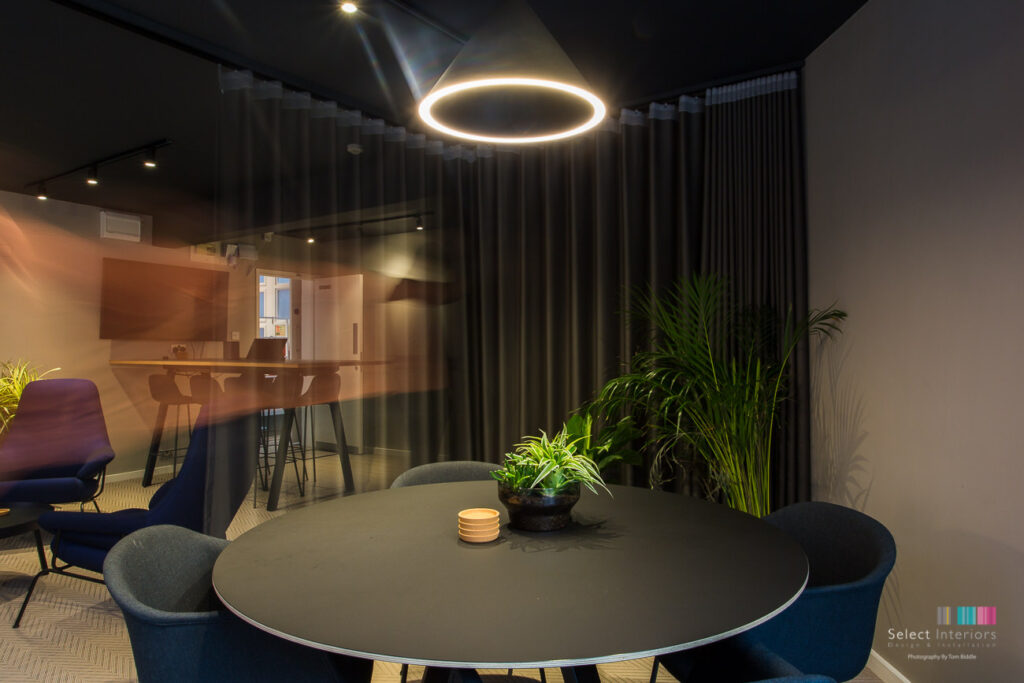
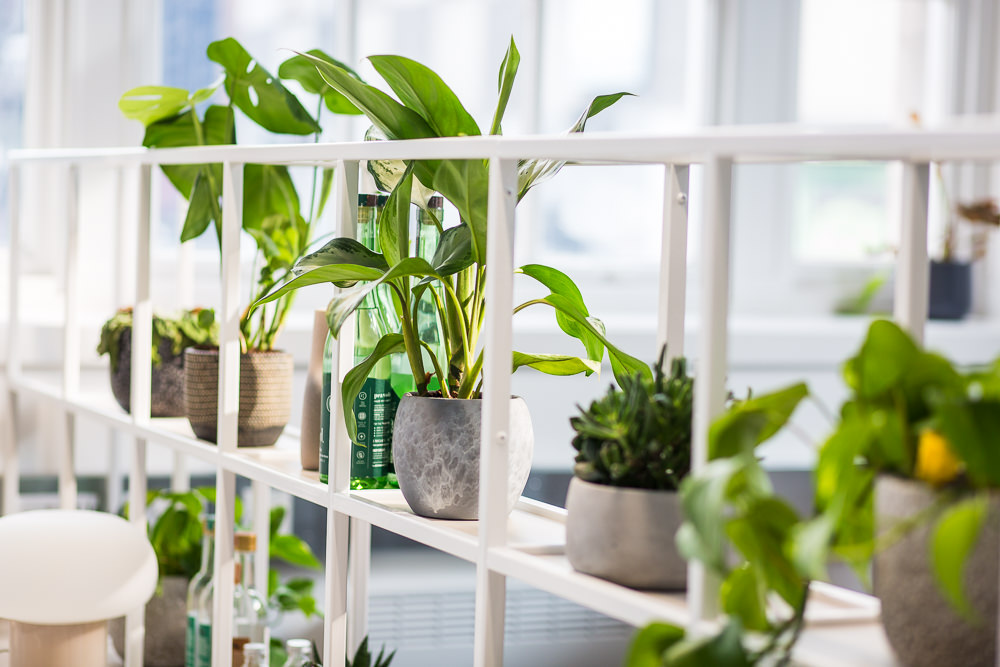
Scent and employee wellbeing
Scent is more than just a pleasant addition to the office environment—it can have a profound impact on employee wellbeing. The right scent can reduce stress levels, boost mood, and even improve cognitive function, leading to higher productivity and job satisfaction.
- Reducing stress and promoting mental clarity: Scents such as lavender, chamomile, and sandalwood are well known for their ability to reduce stress and anxiety. These scents are ideal for helping employees decompress in high-pressure environments, allowing them to maintain a clearer mind throughout the day.
- Boosting mood and maintaining energy: Uplifting scents like citrus, peppermint, and rosemary are known for their mood-boosting properties. These fragrances stimulate the senses, providing a natural energy lift that can help employees stay alert and positive, particularly during long workdays or intense projects.
- Addressing allergies and sensitivitie: While scent can be beneficial, it’s important to consider potential sensitivities or allergies among employees. Scents should be introduced carefully, with options for hypoallergenic or neutral scents that are unlikely to cause irritation. Consulting employees about their scent preferences and sensitivities can help create an inclusive and comfortable environment for everyone.
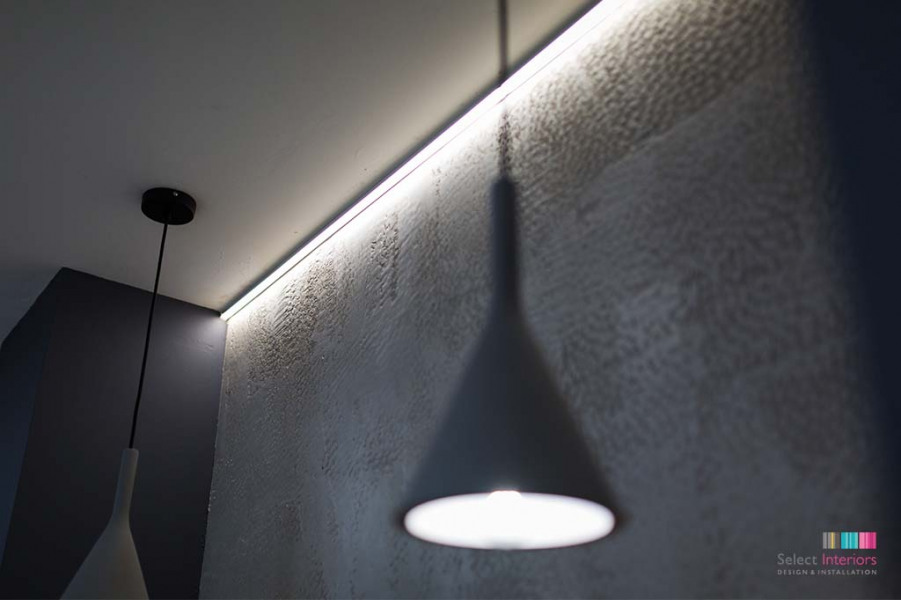
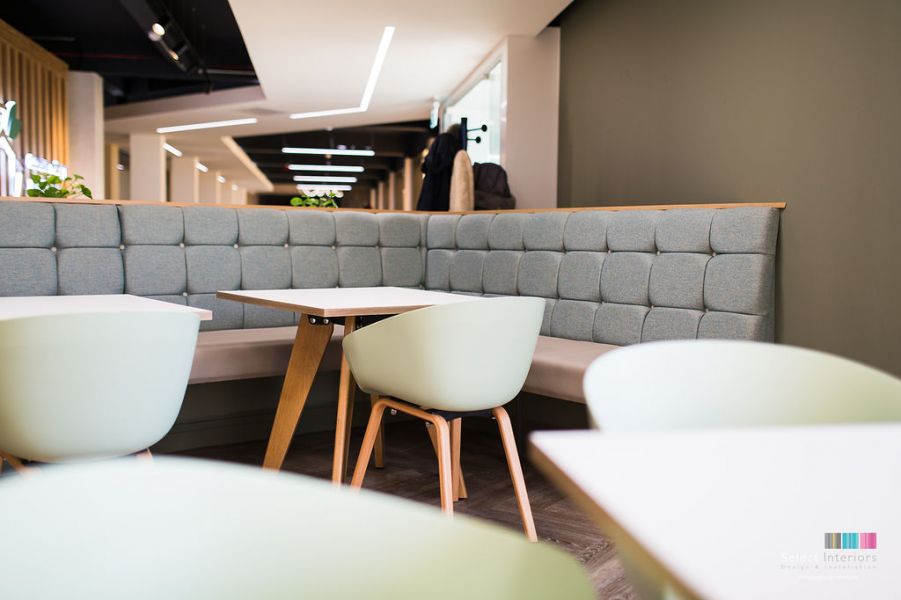
Creating a multi-sensory office design
Incorporating scent into office design is just one aspect of creating a multi-sensory environment. To truly engage employees and create a workspace that supports productivity and wellbeing, designers need to consider how all the senses work together. Integrating scent with other sensory elements, such as lighting, sound, and texture, can elevate the office experience to the next level.
Scent branding in offices: creating a unique identity
Scent branding is becoming an increasingly popular trend in office design, particularly for companies that want to create a distinct and memorable experience. Scent branding involves using a signature scent that becomes part of a company’s identity, much like a logo or colour scheme. This can be particularly effective in corporate settings, where scent can reinforce brand values and culture.
Avoiding common mistakes in scent design
While introducing scent to the office can have many benefits, there are a few common mistakes to avoid to ensure that the environment remains comfortable and inclusive for all employees.
- Overpowering scents: One of the biggest mistakes is using scents that are too strong or overwhelming. This can lead to discomfort, headaches, or irritation among employees. It’s important to keep scents subtle and balanced to avoid overwhelming the senses.
- Choosing offensive or polarising scents: Some scents are not universally appealing, and what smells pleasant to one person may be off-putting to another. Sticking to neutral, widely accepted scents like lavender, citrus, or fresh linen can help avoid polarising employees or visitors.
- Neglecting ventilation: Proper ventilation is essential when introducing scent into an office. Even subtle scents can build up over time without adequate airflow and become overwhelming. Ensuring that rooms are well-ventilated will help keep the environment fresh and pleasant.
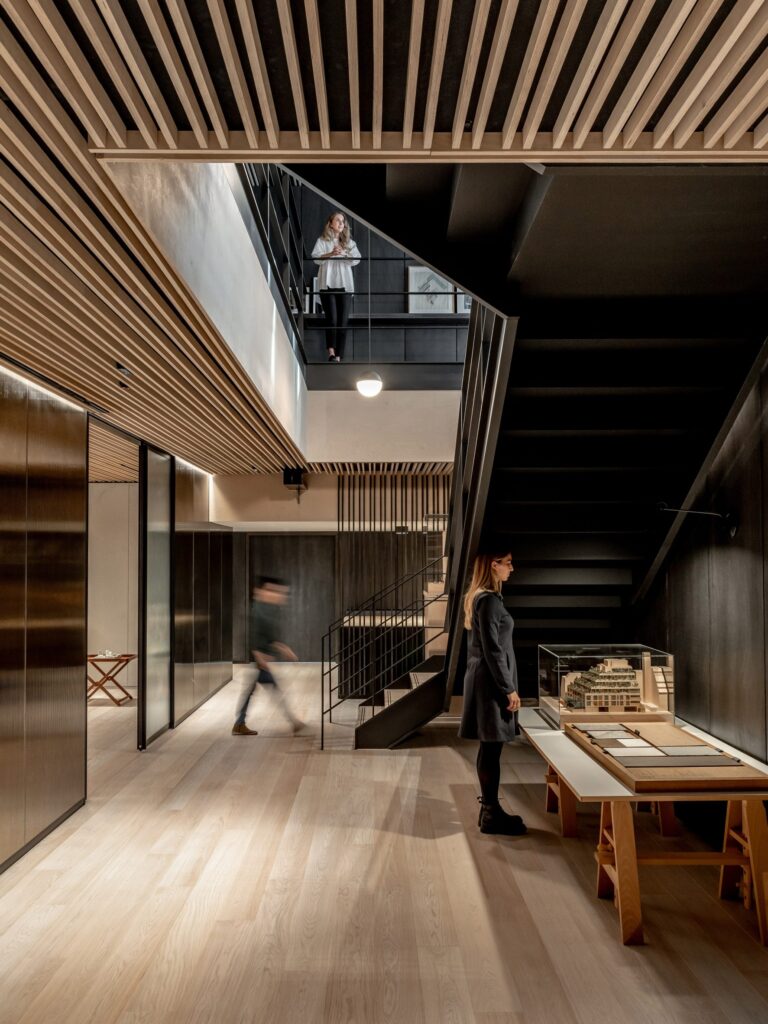
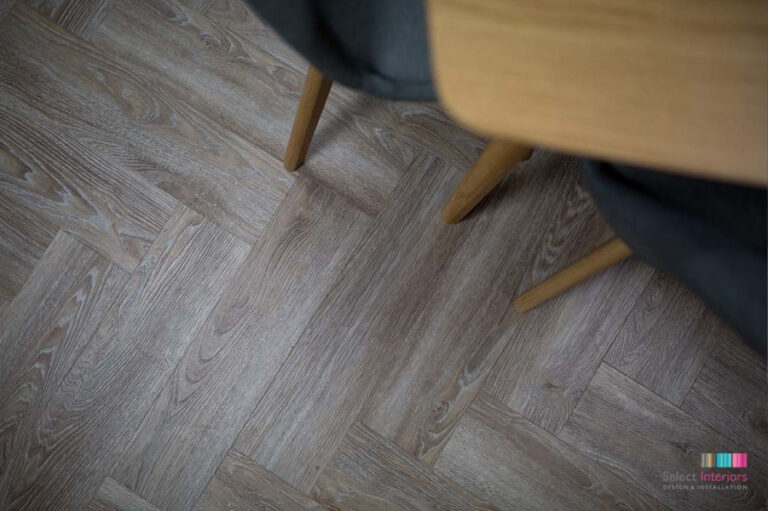
Sustainability in scent design
Sustainability is a growing concern in all office design aspects, and scent is no exception. Many synthetic scents can harm the environment, releasing volatile organic compounds (VOCs) that pollute air. Opting for natural and eco-friendly scent options is key for companies looking to reduce their environmental impact.
Designing for all senses, particularly focusing on scent, can greatly enhance the office experience, making it more engaging, productive, and enjoyable for employees. By carefully selecting scents that suit different areas of the office and integrating them with other sensory elements, businesses can create a more holistic and stimulating work environment. Scent plays a crucial role in the modern office, Whether through subtle, calming scents in breakout areas or energising fragrances in workspaces.
When done correctly, scent design can improve employee wellbeing, boost creativity, and even contribute to a unique brand identity. It’s time to think beyond just what the office looks like and consider how it smells—because a well-scented office is one that feels welcoming, inspiring, and refreshing every day.
We know how to blend design with key elements like the senses, in this case scent. Contact us today and let’s create your dream office.

